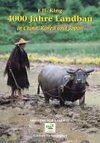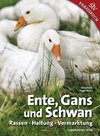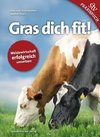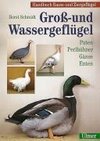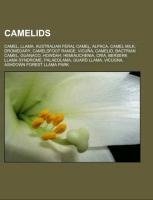
-
 Anglický jazyk
Anglický jazyk
Camelids
Autor: Source: Wikipedia
Source: Wikipedia. Pages: 32. Chapters: Camel, Llama, Australian feral camel, Alpaca, Camel milk, Dromedary, Camelsfoot Range, Vicuña, Camelid, Bactrian Camel, Guanaco, Howdah, Hemiauchenia, Cria, Berserk llama syndrome, Palaeolama, Guard llama, Vicugna,... Viac o knihe
Na objednávku, dodanie 2-4 týždne
13.46 €
bežná cena: 15.30 €
O knihe
Source: Wikipedia. Pages: 32. Chapters: Camel, Llama, Australian feral camel, Alpaca, Camel milk, Dromedary, Camelsfoot Range, Vicuña, Camelid, Bactrian Camel, Guanaco, Howdah, Hemiauchenia, Cria, Berserk llama syndrome, Palaeolama, Guard llama, Vicugna, Ashdown Forest Llama Park, Camelinae, Camelini, Camel Research Farm, Bikaner, Allocamelus, Lamoid, Tülu, Camelus moreli, Accoyo Alpacas, Lamini, Camelopini. Excerpt: A camel is an even-toed ungulate within the genus Camelus, bearing distinctive fatty deposits known as humps on its back. There are two species of camels: the dromedary or Arabian camel has a single hump, and the bactrian has two humps. Dromedaries are native to the dry desert areas of West Asia, and Bactrian camels are native to Central and East Asia. Both species are domesticated; they provide milk and meat, and are working animals. The term camel (from the Arabic ¿¿¿, gml, derived from the triconsonantal root signifying "beauty") is also used more broadly to describe any of the six camel-like creatures in the family camelidae: the two true camels, and the four South American camelids: the llama, alpaca, guanaco, and vicuña. The average life expectancy of a camel is 40 to 50 years. A fully grown adult camel stands 1.85 m (6 ft 1 in) at the shoulder and 2.15 m (7 ft 1 in) at the hump. The hump rises about 30 in (76.20 cm) out of its body. Camels can run at up to 65 km/h (40 mph) in short bursts and sustain speeds of up to 40 km/h (25 mph). Fossil evidence indicates that the ancestors of modern camels evolved in North America during the Palaeogene period (see also Camelops), and later spread to most parts of Asia. The people of ancient Somalia or the Kingdom of Punt first domesticated camels well before 2000 BC. The 14 million dromedaries alive today are domesticated animals (mostly living in the Horn of Africa, the Sahel, Maghreb, Middle East and the Indian subcontinent). The Horn region alone has the largest concentration of camels in the world, where the dromedaries constitute an important part of local nomadic life. They provide peripatetic Somali and Ethiopian people with milk, food and transportation. Commercial camel market headcount in 2003The Bactrian camel is now reduced to an estimated 1.4 million animals, mostly domesticated. It is thought that there are about 1,000 wild Bactrian camels in the Gobi Desert in China and Mongolia. There is a substantial fer
- Vydavateľstvo: Books LLC, Reference Series
- Rok vydania: 2013
- Formát: Paperback
- Rozmer: 246 x 189 mm
- Jazyk: Anglický jazyk
- ISBN: 9781156416341

 Nemecký jazyk
Nemecký jazyk 